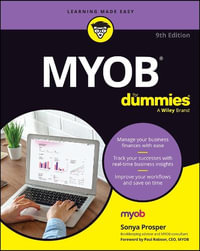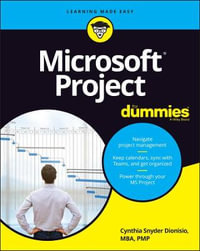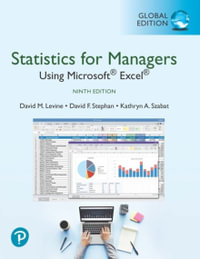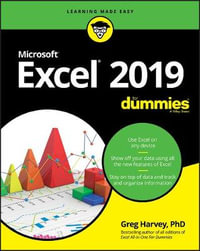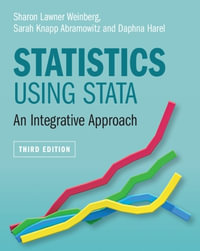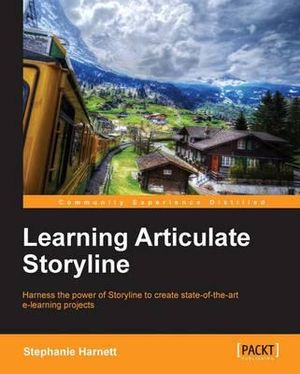
At a Glance
Paperback
298 Pages
298 Pages
Dimensions(cm)
23.5 x 19.05 x 1.58
23.5 x 19.05 x 1.58
Paperback
$86.72
or 4 interest-free payments of $21.68 with
orAims to ship in 7 to 10 business days
Leverage Storyline's no-programming approach and its wide range of features to rapidly create media-rich, high quality content and sophisticated interactions Bring content to life with intelligent and responsive learning and create a customized learning experience Optimize production workflow by easily importing, reusing, and sharing content, as well as editing layouts and interactions Book Details Language : English Paperback : 298 pages [ 235mm x 191mm ] Release Date : July 2013 ISBN : 1849694222 ISBN 13 : 9781849694223 Author(s) : Stephanie Harnett Topics and Technologies : All Books, e-Learning
Preface Chapter 1: Creating a Story Chapter 2: Adding Content into your Story Chapter 3: Adding Interactivity Chapter 4: Adding Characters and Audio Chapter 5: Extending Slide Content Chapter 6: Using Variables to Customize the Learning Experience Chapter 7: Creating Learning Paths Chapter 8: Testing Learner Knowledge Chapter 9: Adding Visual Media to a Story Chapter 10: Publishing your Story Chapter 11: Rapid Development Appendix Index Preface Up Chapter 1: Creating a Story Launching Storyline Creating a new story Storyline interface Story View Normal View (also known as Slide View) Preparing a story Story size Adjusting the story size Creating a story based on a template Importing content from external sources Importing PowerPoint content Selecting slides Importing Articulate Quizmaker content Importing Articulate Engage content Importing Storyline content Saving a story Give it a try Summary Up Chapter 2: Adding Content into your Story Working with the Timeline Controlling the appearance of objects Follow along... Reading the Timeline Follow along... Inserting content into a slide Grouping objects Follow along... Working with text Scrolling panels Slide notes Working with pictures and screenshots Inserting a screenshot Adjusting the properties of pictures and screenshots Visual help Working with slides Organizing slides in Story View Follow along... Customizing slide design Slide Masters Design themes and backgrounds Follow along... Adding animations and transitions Previewing your work Follow along... Summary Up Chapter 3: Adding Interactivity Follow along... Working with states Working with triggers Follow along... Adding hyperlinks Adding buttons Button icons Follow along... Quick publishing Follow along... Summary Up Chapter 4: Adding Characters and Audio Examples of the human touch done well About Storyline characters Character states Adding a character Adding a state to a character Follow along... About character conversations Speech bubbles Adding a speech bubble Audible conversation Recording narration Importing an audio clip Editing an audio track Accessing sound tools Synchronizing objects and narration Adding cue points Follow along... Creating interactive conversations Follow along... Summary Up Chapter 5: Extending Slide Content About layers Adding a layer Adjusting layers Ordering layers Editing the properties of a layer Formatting a layer Adding visibility of base layer objects Adding consistency with master layouts Adding content to a layer Follow along... Showing and hiding a layer Displaying a layer by mouse action Hiding a layer Follow along... Features that extend a slide's content Hotspots Adding a hotspot Markers Adding a marker Follow along... Button sets Turning a set of objects into a button set Follow along... Lightbox Triggering the display of a lightbox Follow along... Summary Up Chapter 6: Using Variables to Customize the Learning Experience Storyline variables Types of variables Follow along... Part 1 -- creating a new project and adjusting the slides Part 2 -- Adjusting formatting Part 3 -- adding new slides and previewing functionality Creating variables Using variables Inserting a reference to a variable Data Entry Inserting a Data Entry box Follow along... Part 1 -- adding a Data Entry box to solicit learner thoughts Part 2 -- adding a Data Entry box to collect a learner name Refining action based on conditions Follow along... Part 1 -- setting up variables and tracking progress Part 2 -- controlling learner navigation to prevent skipping sections Summary Up Chapter 7: Creating Learning Paths Principles of branching Controlling presentation order Follow along... Understanding slide properties Slide advances When revisiting Slide navigation controls Player features Follow along... Customizing slide navigation Follow along... Summary Up Chapter 8: Testing Learner Knowledge Question categories and types Creating, editing, and customizing questions Creating graded or survey questions Initial setup of graded or survey questions Follow along... Configuring graded or survey questions Question feedback Follow along... Scoring, results, and review Inserting a result slide Customizing feedback further Follow along... Converting static content Freeform question types Pick One, Pick Many, and Text Entry Text Entry and hotspot Drag-and-drop Shortcut key Follow along... Customizing your quiz Follow along... Summary Up Chapter 9: Adding Visual Media to a Story Working with visual media Supported media Bringing media into a story -- part 1 Video Inserting video to a story Editing video Basic tasks Inserting video from a website Follow along... Bringing media into a story -- part 2 Flash files Adding Flash to a story Web content Adding web content to a story Follow along... Screen recordings and interactive simulations Recording a screen Steps to record a screen Step-by-step recordings inserted in View mode Step-by-step recordings inserted in Try mode Step-by-step recordings inserted in Test mode Fine tuning the recording Follow along... Creating emphasis with pans and zooms Follow along... Tips on working with video Summary Up Chapter 10: Publishing your Story Previewing projects Customizing the Player Player properties review Features Menu Resources Glossary Colors and effects Text labels Other Current Player Follow along... Publishing Published output Publishing to the web Publishing with tracking Considerations when tracking Other publishing options Considerations when working with HTML 5 output Summary Up Chapter 11: Rapid Development Concept of reusability Leveraging existing assets Importing external content Considerations when importing Build once, and reuse many times Question Banks Follow along... Interaction templates Follow along... Reusing glossaries and resources Reusing characters and images Creating images from video Best practices for organizing assets Productivity boosters Top 10 Storyline productivity boosters Summary Up Appendix The Articulate community Design and development File locations Flash, HTML and mobile feature comparison Creating your own keyboard shortcuts Player color customization Story size and dimensions Designing for multiple devices Player size considerations Working with media Assets and templates Accessibility Inspiration
ISBN: 9781849694223
ISBN-10: 1849694222
Published: 28th April 2013
Format: Paperback
Language: English
Number of Pages: 298
Audience: Professional and Scholarly
Publisher: Packt Publishing
Country of Publication: GB
Dimensions (cm): 23.5 x 19.05 x 1.58
Weight (kg): 0.52
Shipping
| Standard Shipping | Express Shipping | |
|---|---|---|
| Metro postcodes: | $9.99 | $14.95 |
| Regional postcodes: | $9.99 | $14.95 |
| Rural postcodes: | $9.99 | $14.95 |
How to return your order
At Booktopia, we offer hassle-free returns in accordance with our returns policy. If you wish to return an item, please get in touch with Booktopia Customer Care.
Additional postage charges may be applicable.
Defective items
If there is a problem with any of the items received for your order then the Booktopia Customer Care team is ready to assist you.
For more info please visit our Help Centre.






